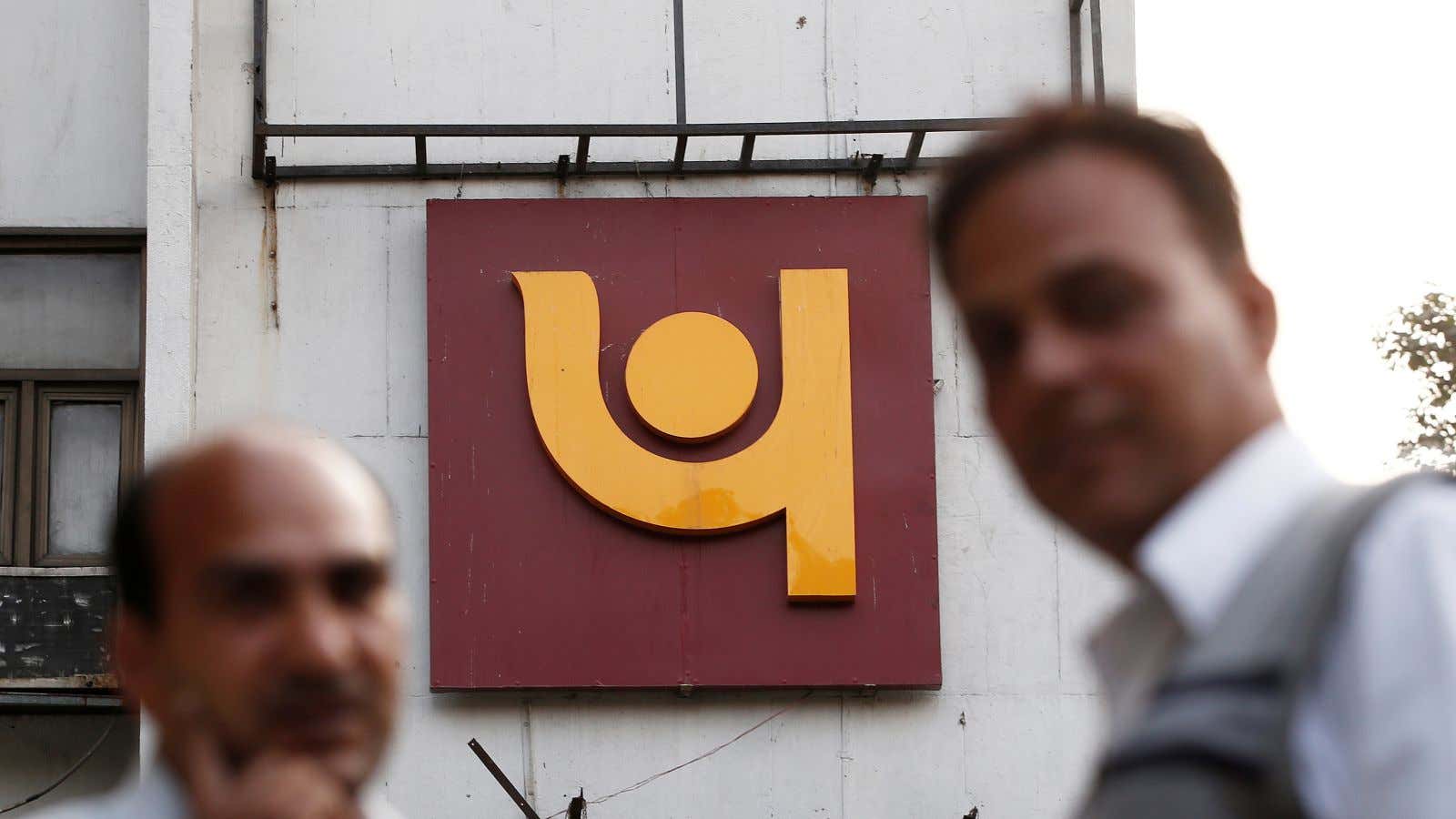The alleged $1.8 billion (over Rs11,000 crore) fraud unearthed at Punjab National Bank (PNB) has opened up a can of worms.
With more banks, agencies such as Enforcement Directorate, and even the government getting involved, it has snowballed into a banking industry crisis.
PNB is likely to feel the heat in terms of a weaker balance sheet and lower stock price. If it is held liable, then profits made between April 2012 and March 2017 could be hit, a report by international brokerage Macquarie says. This raises difficult questions around the poor risk-management practices at India’s state-run banks.
In a written reply to the Rajya Sabha last July, minister of state for finance Santosh Kumar Gangwar had revealed the quantum of fraud at various public sector banks in 2016-17. PNB topped the list with Rs2,808 crore ($439.4 million).
Now, with the alleged Nirav Modi fraud coming to light, PNB needs to probe if it was a standalone or systemic problem, suggests R Gandhi, former deputy governor of the Reserve Bank of India (RBI).
Gandhi spoke to Quartz about what steps PNB should take next.
Edited excerpts:
What questions does this fiasco raise about corporate governance at banks?
The investigation needs to ascertain when it (the transactions) became fraudulent and if the relationship with the customer was fraudulent right from the start or it turned so during the course of time. Right now, what the banks involved, especially PNB, need to determine is if this was a systemic issue or not. If the systems were in place but individuals failed, then those individuals need to be brought (to book). But if it is a problem with the system, then the risk-based practices need an overhaul.
What steps should be taken if they determine that this is indeed a systemic problem?
If they find out that there is systemic lacuna…I believe they will ask a special audit to be conducted in this case to determine why it went unnoticed. Rs11,400 crore is a big amount and, therefore, I hope the bank board will directly monitor the audit. Even the government of India and the RBI would be looking at it very closely.
Why do you think the fraud went unnoticed for seven years?
Most of the times when fraud takes place in a long-standing relationship like this, it is always a mystery as to how and when it started. It can be resolved only after a detailed investigation.
There has been some debate about who should bear the brunt—PNB or other banks as well.
It depends on the validity of the document (letters of credit). If the document is valid, then PNB will be entirely responsible. If it was forged or invalid, then the sanctioning party (other banks) will become the bearer of liability. And if the sanctioning bank had asked for confirmation and if PNB had confirmed it, then again the responsibility shifts to PNB. Therefore, the validity and confirmation asked and given are going to be key in this case.
